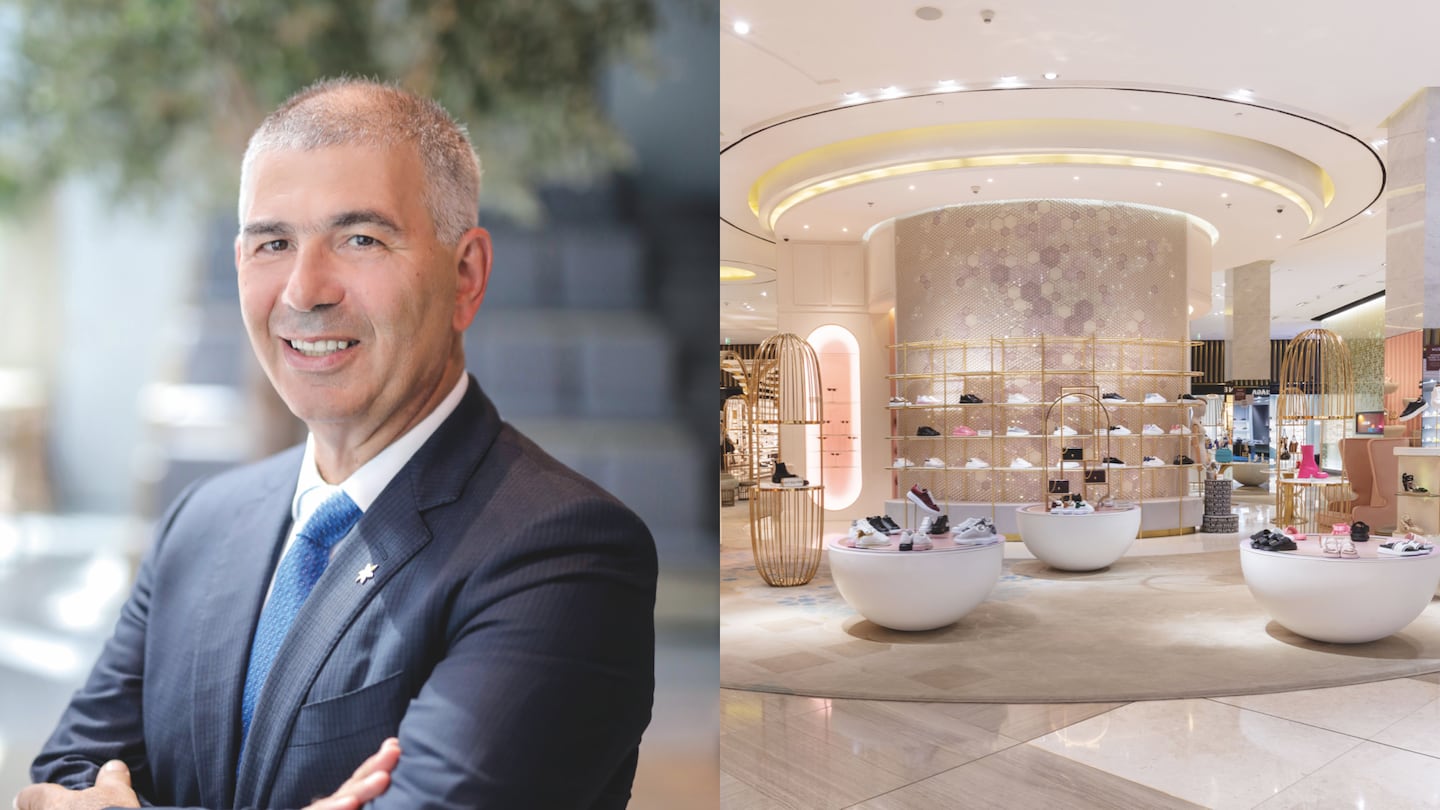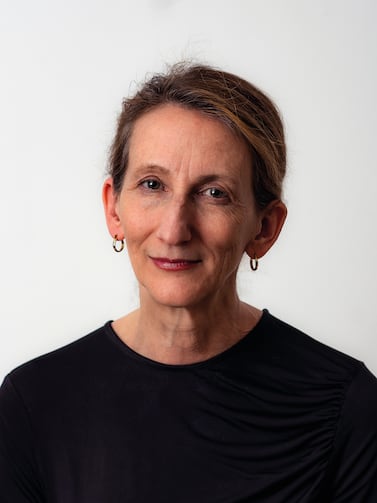
The Business of Fashion
Agenda-setting intelligence, analysis and advice for the global fashion community.

Agenda-setting intelligence, analysis and advice for the global fashion community.

 Opens in new window
Opens in new windowWhen scanning the globe to identify growth opportunities in the year ahead, most fashion executives responding to the BoF-McKinsey State of Fashion 2023 Survey cited the Middle East as a region that holds greater promise in 2023 than in 2022. Indeed, sales of luxury fashion in the Gulf Cooperation Council alone reached around $4.2 million in 2021, an increase of 39 percent on 2019 levels. Future growth in the region is pegged to the return of international tourists and e-commerce acceleration, among other factors.
Capturing growth in the region will require brands to double down on localisation and personalisation strategies, according to Patrick Chalhoub, group president of Chalhoub Group, a Dubai-based luxury goods retailer and distributor which was set up by his father in 1955 and is now the regional distribution and franchise partner for hundreds of global fashion and beauty brands including Dior and Tory Burch along with joint ventures with LVMH, Christian Louboutin and Farfetch.
While growth prospects are robust across the GCC region, Saudi Arabia, where luxury sales have been recording double-digit growth, stands out for Chalhoub’s top executive. He sees the fashion industry playing a role in the country’s sweeping Vision 2030 programme aimed at modernising and diversifying its economy.
BoF: As a veteran fashion executive in the Middle East, you will have witnessed many economic and social shifts impact the fashion market over the years. What is having a significant impact today?
ADVERTISEMENT
Patrick Chalhoub: We’re living in very interesting times in the Middle East. Because current economic developments are like nothing we have seen for many, many years, there is a lot of wealth thanks to additional revenues coming from oil. The Middle East, and the GCC in particular, is becoming an international business destination, but also an international tourist destination, with initiatives like the Red Sea Project [on Saudi Arabia’s west coast] that will be adding thousands of hotel rooms by the end of this decade.
What the fashion industry needs to do is make sure we maintain relevance for our local customers. Imagine that historically — before 2020 and 2021 — two-thirds of luxury spending by GCC shoppers happened abroad because they perhaps weren’t getting the experience, service, choice or journey they wanted when shopping locally. We need to make sure that we do not decrease the amount they are buying outside the GCC, but increase the amount they are buying locally. [We need to] be there to fulfil what they want more.
BoF: There are well-established consumer markets across the GCC, but what about, for example, Egypt, where the government is investing in the development of new cities and big infrastructure projects?
PC: There is certainly movement in Egypt in terms of economic development. All those projects happening along the Red Sea — with all those new hotels opening — are a huge part of this drive to become more of an attractive destination to tourists from around the world.
But this comes with its own short-term challenges which are probably more complicated than in other countries. Energy is expensive, inflation is high, the exchange rate is difficult [with the Egyptian pound weakened substantially against the US dollar in 2022]. In Egypt, there is still a lot of heavy administrative ways of doing business, often for the wrong reason or reasons inherited from the past that tried to limit imports to help local manufacturing develop. I’m not sure that measures taken 30 years ago are still relevant today but changing them is still complicated there. So Egypt is there to develop but it is something that needs to gradually build up and develop in our field of activity [in the luxury fashion market].
BoF: Localisation seems to be a big theme for global brands around the world, with consumers increasingly buying local brands imbued with local culture and heritage. How are you seeing this play out in the Middle East?
PC: There is a movement in the Middle East, but not a movement of national pride like in China. We do want to buy locally … and we have seen a proliferation of local fashion designers but we need to continue developing them. We are only just getting started with that.
Our group has been actively involved in assisting in early-stage local disruptor brands. We recently set up the Fashion Lab, an open innovation platform. Our regional incubator has assisted start-ups ranging from Dania Shinkar [handbags] to Noms Life [lifestyle brand] and Kaf by Kaf [ready-to-wear] to Cones & Rods [eyewear].
ADVERTISEMENT
BoF: What can global brands do to ensure that they are in tune with their Middle Eastern customers?
PC: It helps for brands to review and revisit the way business is done and the kind of experiences that are relevant for the Middle East. We are already seeing that. For example, the end of the fasting period of Ramadan is very festive, and we are seeing a lot of specific collections done for it. Probably 60 percent, 70 percent of brands have made a cruise collection just for that specific celebration.
We are seeing that brands are much more interested in doing specific or personalised events and activations. I never saw so many global luxury brand-led events that resonated with the GCC’s audience as I did in 2021 and 2022. Brands like Chanel, Hermès, Louis Vuitton, Cartier and Tiffany have been working on local strategies to attract consumers in the region through collaborations, dedicated collections and immersive events in iconic locations such as Al-Ula in Saudi Arabia. However, a lot of personalisation is needed in this region. Middle Eastern customers will build up trust in big brands, but they need [brands to provide] points of differentiation.
BoF: How are customers in the region different today than pre-pandemic or during the height of the pandemic? What will the new consumer profile in 2023 look like in terms of demographics and purchasing decisions?
PC: [Generally] we are seeing more assertiveness among our consumers. The younger the consumer is, the more we see it. They are still attached to branding, but less so. They also have more curiosity, and so are more eager to try a new brand, even a local fashion designer, rather than a global one. We are also seeing customers mixing brands and products more and more, because of this assertiveness in terms expressing themselves. They don’t feel that they should necessarily be dressed from head to toe in one brand.
In terms of product categories, there is a big surge in jewellery. I hear that this is not just in the Middle East, but worldwide. Jewellery has always been extremely important in the Middle East, but not branded jewellery, like now. It helps that the brands are becoming more and more creative.
The customer journey is adapting too. People often like to go into stores in [groups], with family and friends, so they need more areas for seating, more space, and not just at a counter for people in a hurry. We really need to make those kinds of adaptations.
BoF: Unlike in other parts of the world where e-commerce growth is returning to pre-pandemic levels, e-commerce seems to be accelerating in parts of the Middle East. What’s fuelling that?
ADVERTISEMENT
PC: The story behind that is that we are quite late compared to other regions in terms of the percentage of sales done through digital channels, for various reasons. For example, the content might not have been relevant or there was not enough choice. All of this is improving: the customer experience itself, the availability of products, the relevance of content. Having said that, what we have seen in 2022 is that there is bigger growth in brick-and-mortar than e-commerce.
There is another aspect of brick-and-mortar that I’d like to mention. For developing countries, real estate development is often a challenge. When there is a surge in demand for real estate — like we saw in 2019 and again in 2021 and 2022 — you have scarcity of supply, which not only increases prices, and any new project will take five to seven years to complete. Now we are in a cycle in which there is much more demand in some cities, such as Riyadh [Saudi Arabia] and Doha [Qatar], than others. We really need to be more dynamic and creative about how to solve this tension, because there is scarcity of locations, and maybe this requires a different way of thinking about different consumers.
BoF: Chalhoub Group recently announced that it is buying a majority stake in Threads Styling, an online, personalised, chat-based luxury fashion and jewellery shopping service. How does this fit into the group’s overall strategy to build out digital capabilities?
PC: We are embarking on the digital world quite late. Before the pandemic, e-commerce represented around 1 percent of our turnover; today it is approximately 10 percent.
The group represents and runs over 80 e-commerce websites and apps for partners and joint venture brands in the [Middle East-North Africa] region. And since 2018, we have had a joint venture partnership with Farfetch in the GCC and Levant [Egypt, Jordan and Lebanon], which includes an Arabic language site. But we have a lot to learn to be closer to the digital-native consumer … which is what we find fantastic in Threads Styling. It’s really about clienteling, taking care of our client, and connecting with them, and keeping the human touch, even if we have all the digital devices.
This interview has been edited and condensed.
This article first appeared in The State of Fashion 2023, an in-depth report on the global fashion industry, co-published by BoF and McKinsey & Company.
 Opens in new window
Opens in new windowThe seventh annual State of Fashion report by The Business of Fashion and McKinsey & Company reveals the industry is heading for a global slowdown in 2023 as macroeconomic tensions and slumping consumer confidence chip away at 2022′s gains. Download the full report to understand the 10 themes that will define the industry and the opportunities for growth in the year ahead.
Having a clear perspective on where to invest globally will be more challenging than ever in 2023 as brands weigh up geopolitical and reputational risks alongside the economic potential of the regions in which they operate.

Janet Kersnar is Executive Editor at The Business of Fashion. She is based in London and oversees long-form content, including Case Studies and Reports.
Though e-commerce reshaped retailing in the US and Europe even before the pandemic, a confluence of economic, financial and logistical circumstance kept the South American nation insulated from the trend until later.
This week’s round-up of global markets fashion business news also features Korean shopping app Ably, Kenya’s second-hand clothing trade and the EU’s bid to curb forced labour in Chinese cotton.
From Viviano Sue to Soshi Otsuki, a new generation of Tokyo-based designers are preparing to make their international breakthrough.
This week’s round-up of global markets fashion business news also features Latin American mall giants, Nigerian craft entrepreneurs and the mixed picture of China’s luxury market.